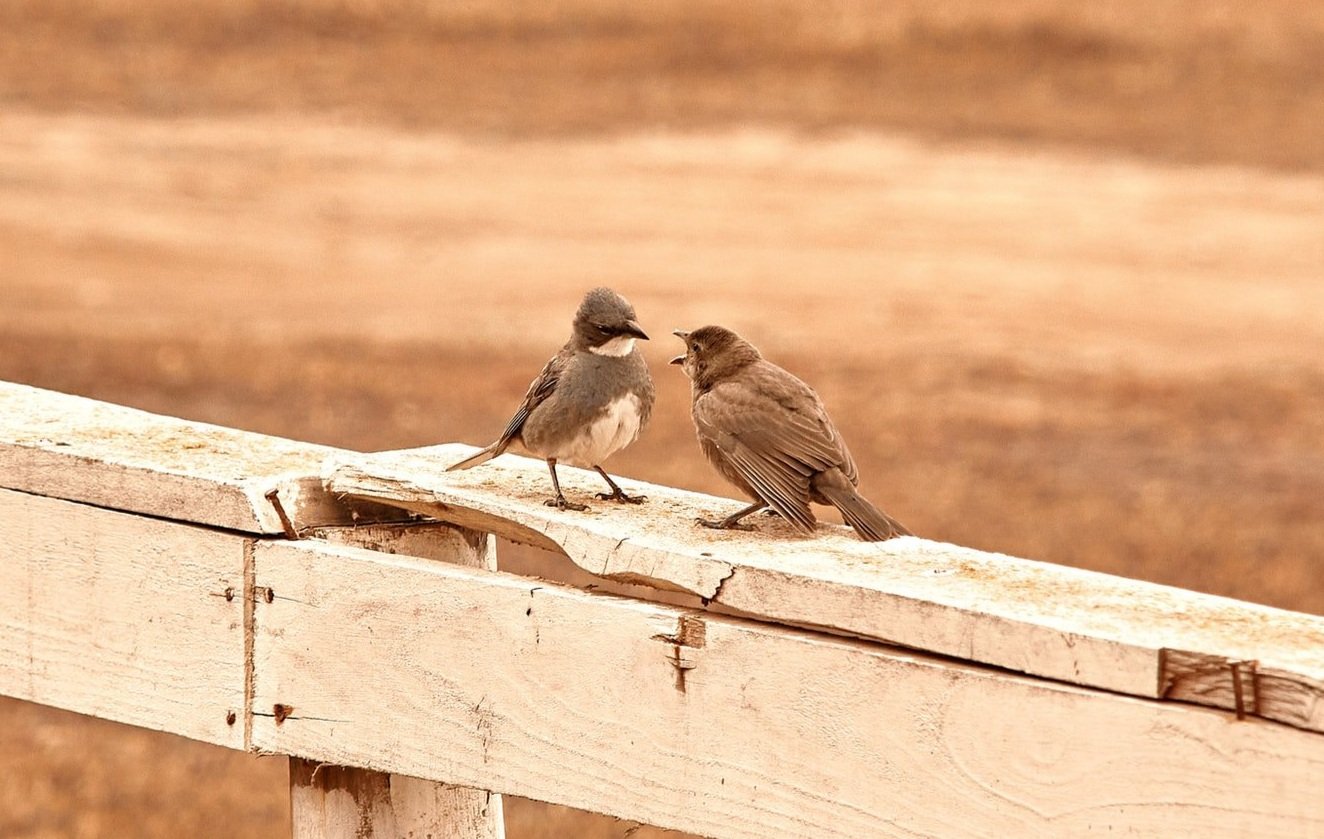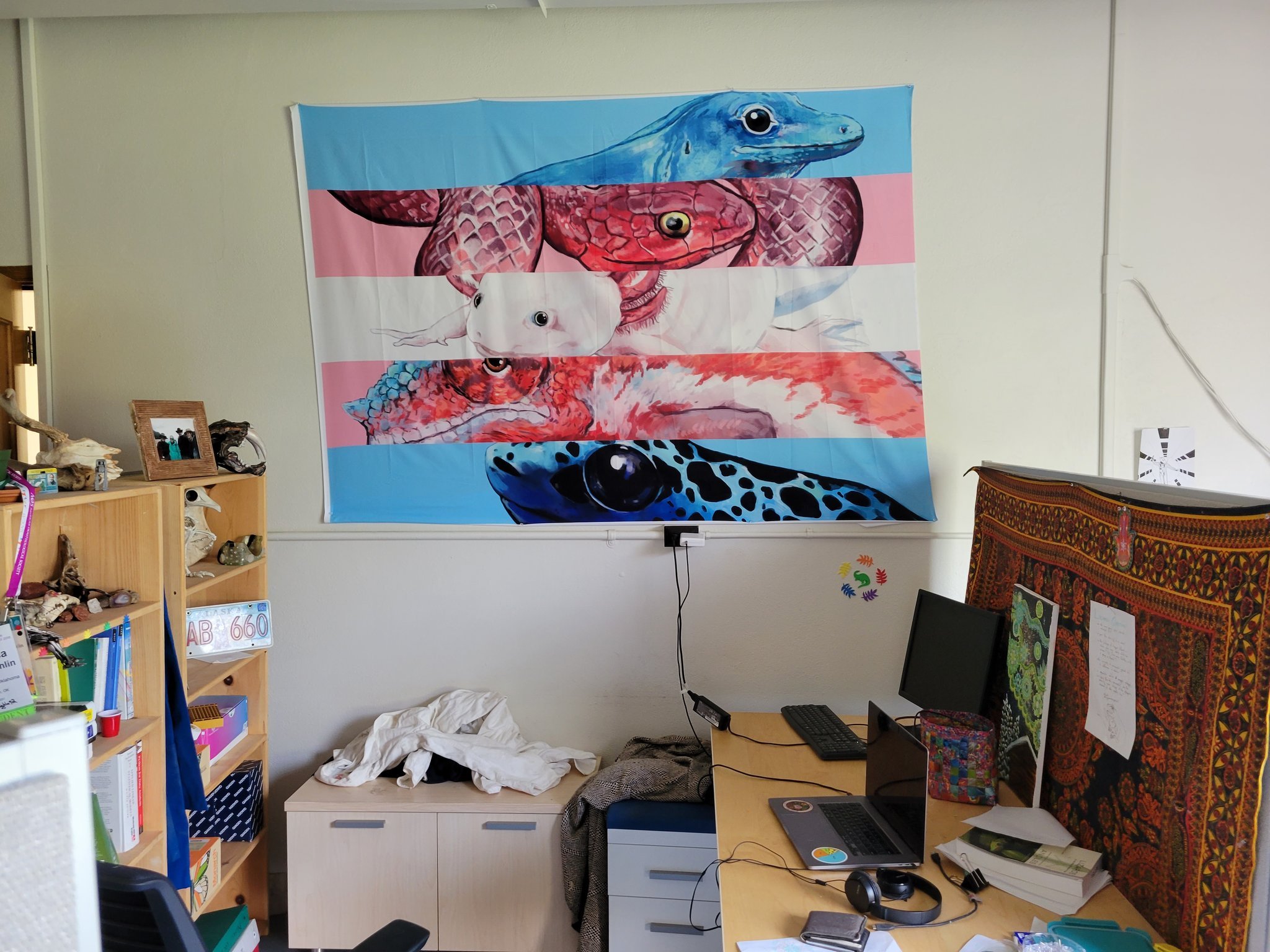Building a lab where queer researchers can thrive
One of the questions I get asked most often, hands-down, is “what can allies do to make our labs better spaces for queer students and colleagues?”. It’s an important thing to think about as a PI (or really, anyone who supervises folks in a research setting)- you’ll be working with, supervising, and mentoring people who come from a variety of backgrounds and identities, and if you truly want folks to excel, that means consciously creating an environment in which they can.
This of course is the case for identities far beyond the LGBTQ+ community. You should be actively asking yourself about how the environment you’re building could impact people of color, immigrants, disabled researchers, undocumented researchers, and more. Each of those deserves their own discussion, and I’ll be linking resources that discuss these topics as I find them. Some of the general principles will overlap, but obviously in terms of concrete actions, there’s a lot that will be specific.
Don’t worry, you probably don’t need to read this many books. I mean, unless you want to, I guess. Stock image.
First up: educating yourself and others in supervisory roles. What do terms like cis, trans, AFAB, AMAB, ace, bi, pan, genderqueer, or agender mean? What are the legal protections in your area of residence for sexual orientation, gender expression, and gender identity? What resources are available within your university for changing names and gender markers on staff or student records? If you’re going to be a proactive ally, you need to know both the basics of talking about queer identities, as well as how those intersect with your job as a supervisor.
An important thing here: don’t ask the one openly queer person in your lab or department to do this education. Some of us are happy to talk through our experiences and offer suggestions, but the sort of education I’m talking about is something people literally do for their jobs. They’re experts in both the topics at hand, and in teaching them to others. A good start is something like LGBTQ+ ally training, available on many campuses as either a regularly occurring course or as a training session you can sponsor for your lab group or department. If that’s not available, or you would like more specialized discussion of specific topics like fieldwork safety, there are consultants you can hire to do such a training for your group.
I was going to use a stock image of a conversation here, but this came up in the search and honestly I can’t say no to that suggestion, lol. Stock image.
Number 2: listen to the feedback and experiences of queer people around you. What do they need? What areas do they see as particularly in need of improvement in your department or lab? Again, don’t just grab the one queer person in the lab down the hall and have them give you an inclusion evaluation or whatever. What I mean is, if someone brings up an issue- say, that there’s no bathroom in your building they feel comfortable using- take it seriously. There’s this stereotype of the loud queer person who makes everything about catering to their comfort down to the tiniest ridiculous thing, but honestly? Never met anyone like that. It’s actually super terrifying to say in lab meeting “hey, maybe we could have pronouns on the lab website?”, especially if you’re new to a group. If we trust you enough to bring this stuff up, it’s because it really is important, and that we think you care about us as people enough to do something about it.
My desk at UC Berkeley, making it very obvious that our lab is super welcoming to trans researchers. Art by the awesome Alex Holt.
Number 3: actively signal that you’re trying to be an inclusive space. Now, there’s a whole conversation around what is useful communication of lab values to a prospective student or postdoc versus what is the ever-dreaded “virtue signaling”, which will probably need to be a whole post on its own. Be really careful in how you talk or think about this, because it’s really easy to come off the wrong way here.
The big thing is thinking about 1) what message you’re trying to send about your research group’s culture and values and 2) why you’re sending that message anyways. The reason to do this isn’t for becoming known as “the inclusive lab” just for the sake of it. It’s communication, and specifically, you trying to communicate to potential members that if they’re queer, they’ll be supported and safe (and also if they’re bigots they probably need to find a different lab). You can do this with putting an ally sticker on your door, sure- in places with very little queer visibility, this actually be helpful- but that’s easy. What are you doing that actually takes time and effort to do for us?
Having a publicly shared lab code of conduct and/or ethics statement can be helpful here. If I log onto your website and one of the main tabs is what you’re doing to for equity and justice in STEM, it’s a promising sign that you probably truly do value these things if you’re centering them right up there with your research. Don’t just phone this in, either- it’s really obvious if you’ve just copied a standard text. This is a good document to collaborate on with your lab members and get their feedback and suggestions- after all, the environment of the group is going to come from everyone, not just you.
Don’t let this become your lab group photo. Stock image.
Number 4: don’t tolerate hateful behavior. “But wait,” you might say, “I thought we’re supposed to be tolerant of everyone!” I don’t have time to go into Popper’s paradox here, but basically- actually, to be tolerant (and inclusive!) of the largest number of people, that means shutting out the people who have intolerant views. Nothing shatters the trust a queer person has in the environment around them than having someone do something that hurts them, only to have the people they trust to maintain that safe environment shrug it off. Building a truly inclusive lab isn’t just about bringing people in- it’s about making sure harmful things stay out as well.
Obviously you should take queerphobic incidents seriously just because you, like, want to be a good person and are committed to building an inclusive space. But also? Depending on where you are and what type of institution you’re at, you may also legally be required to do so. In the US, some states, such as California, where I’m currently based, have employment protections that specifically include LGBTQ+ people. In other states, there may not be state protections, like those of my previous institutions (Oklahoma and Alaska), but federal Title VII and Title IX protections have been recently defined to include queer folks under their mandate. Make sure you understand how these rules apply in your specific locality.
Even outside of a legal framework (and honestly, that’s sort of a last line of resort in a lot of cases), there’s things you can do to promote accountability in you research group. One option is again a lab code of ethics. In some groups, new lab members are asked to sign this, making it clear that they understand and accept these guidelines for what your group considers acceptable behavior. Pairing this with education for your group can help avoid future problems, as well as reinforce that you take the safety of queer researchers seriously.
Idk, maybe the answers are at the end of the rainbow, but that’s not really helpful. Stock image.
Finally, accept that there’s always more to learn. Conversations about how we define our queer identities and the issues we face at a given time are always changing, growing, and evolving. Ten years ago, the big headline fight was same-sex marriage. Today, trans rights are in the spotlight, with often brutal attacks in the media and legislature on issues like access to care and recognition of nonbinary genders. Ten years from now, there will be yet new focuses. There’s no finishing line where you’ll have learned everything you need to know, and if you’re not part of the LGBTQ+ community yourself, be especially wary of thinking of yourself as an “expert”. Let yourself be humble enough to keep learning, and if you make a mistake, learn from it without making it all about yourself. You don’t get to just wake up one day and declare yourself an ally- you have to follow that intention through with conscious effort, and it’s always a label that you’re given by the community you’re trying to help. If you want to earn the right to be called an ally, it will take work- but your research group will be better for it.
In future posts, I’ll likely get into more specific topics, so stay tuned on this series! Let me know if there’s specific things you’d like me to cover.





